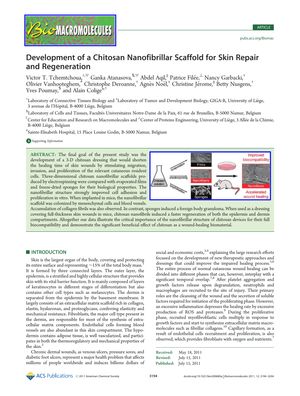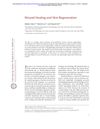Development of a Chitosan Nanofibrillar Scaffold for Skin Repair and Regeneration
July 2011
in “
Biomacromolecules
”
chitosan nanofibrillar scaffold skin repair regeneration chitosan nanofibers cell adhesion proliferation differentiation human fibroblasts microvascular endothelial cells keratinocytes biocompatible cell invasion collagen deposition blood vessel formation immune response wound healing epidermis dermis hair follicles vascular network tissue engineering wound dressing deep ulcers

TLDR Chitosan nanofiber scaffolds improve skin healing and are promising for wound treatment.
The study from 2011 focused on the development of a chitosan nanofibrillar scaffold for skin repair and regeneration. It found that chitosan nanofibers provided a better substrate for cell adhesion, proliferation, and differentiation compared to chitosan films, with human fibroblasts, microvascular endothelial cells, and keratinocytes showing improved growth and spreading on the nanofibers. In vivo experiments with 30 mice demonstrated that chitosan nanofiber scaffolds were biocompatible, supported cell invasion, collagen deposition, and blood vessel formation, and did not induce an adverse immune response. The chitosan nanofiber dressings significantly enhanced wound healing in mice, with faster regeneration of the epidermis, dermis, and hair follicles, as well as the formation of a well-developed vascular network. By day 21, treated wounds had well-vascularized new skin, while control wounds lacked such differentiated structures. The study concluded that chitosan nanofibrillar scaffolds are promising for tissue engineering and wound dressing applications, particularly for deep ulcers.

